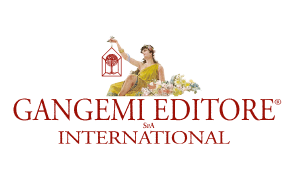
25,00 €
Potrebbero interessarti anche
War & Art WWI – USA in ITALY
Destruction and protection of Italian Cultural Heritage during World War I
A cura di: Jones Albert L.
Facing English text
Formato: 22 x 24 cm
Legatura: Filorefe
Pagine: 96
Anno edizione: 2017
ISBN: 9788849234978
EAN: 9788849234978
UB. INT. : T501A V16i V42i
Contenuto
War and Art: USA in Italy è la seconda tappa di un progetto di ricerca iniziato con War & Art: The Preservation of Italian Treasures. Questo secondo volume sottolinea l’importanza dell’ingresso degli Stati Uniti nella Prima Guerra Mondiale da diverse prospettive.
La mostra fotografica, ora esposta al Pentagono, comprende immagini dal Museo del Risorgimento, dal Museo della Battaglia Vittorio Veneto, dal Museo Hemingway e della Grande Guerra, dagli archivi dei Foggiani e del U.S. 332nd Infantry Regiment WWI Centennial Committee, ed è stata coordinata dall’Ambasciata d’Italia a Washington.
L’uso di fotografie per sottolineare il rapporto tra guerra e opere d’arte è stato strumento di propaganda nazionale, ma ci ha anche permesso di avere una documentazione dettagliata di ciò che veniva fatto a protezione delle stesse opere.
I monumenti? Protetti e avvolti con sacchi di sabbia o alghe. I dipinti? Imballati e inviati in luoghi più sicuri. Gli affreschi? Protetti con materassi.
L’Italia è riuscita a proteggere la maggior parte dei suoi tesori artistici – e quindi la propria identità – da uno spietato annullamento. All’epoca i fotografi e i pittori-soldati erano estremamente importanti nel mondo figurativo: attraverso le loro opere – disegni, schizzi e dipinti e, in questo caso, fotografie – hanno catturato gli orrori della guerra e li hanno saputo trasformare in qualcosa di unico: Arte.
War and Art: USA in Italy is the second instalment in a longterm
research project which started with War & Art: The Preservation
of Italian Treasures. This second volume underlines the
importance of the entrance of the United States into the war
from a number of different perspectives.
This photographic exhibition, now on display at the Pentagon, includes
images from the Museo del Risorgimento, the Museo della
Battaglia Vittorio Veneto, the Museo Hemingway e della Grande
Guerra, the archives of the Foggiani and U.S. 332nd Infantry Regiment
WWI Centennial Committee, and is the result of a joint effort
coordinated by the Embassy of Italy in Washington, D.C.
The use of photographs to underscore the relationship between
war and works of art was a domestic propaganda tool, and also
provided detailed documentation of efforts made to try and stop
these artworks from being damaged and even destroyed.
Monuments were protected and wrapped with sacks of sand or
seaweed, paintings were packed and sent to safer places, and
mattresses placed in front of frescoes and sculptures.
Italy preserved most of its artistic treasures – and thus identity
– from ruthless annihilation. At the time, photographers
and soldier-painters were extremely important in the figurative
world: through their works – such as drawings, sketches and
paintings, and in this case photos – they captured the horrors
of war and transformed them into evidence, as well into something
unique: Art.
Parole chiave
Condividi su












